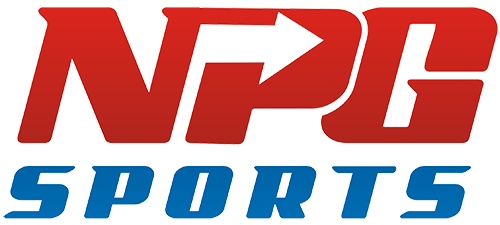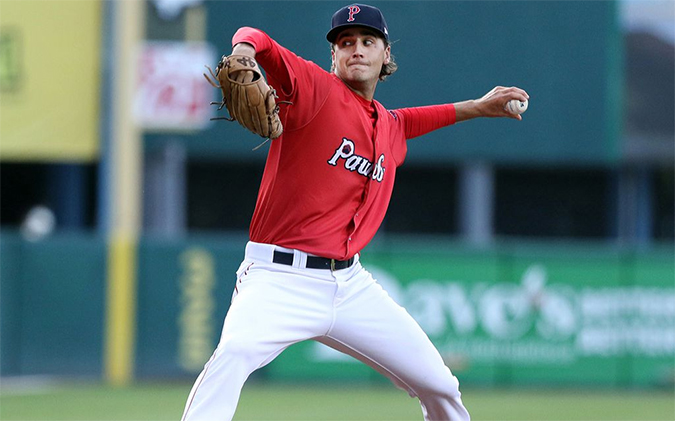Kyle Hart missed the call. Though he’d been waiting all day last Wednesday to hear from Ben Crockett, Hart was at dinner with a college teammate when the Red Sox farm director reached out. When he saw the missed call, he hurriedly returned it.
“He told me, ‘Hey Kyle, I have some good news for you,’ ” said Hart.
When Crockett informed the 26-year-old lefthander that he was being added to the major league 40-man roster — and getting an invitation to spring training — it was a gratifying moment. Despite obscure origins and a little-noticed trajectory through the Red Sox system, Hart had earned the same status as highly regarded PawSox teammates Bobby Dalbec and C.J. Chatham, along with fireballing lefty Yoan Aybar.
Hart’s ascent to the brink of the big leagues warrants notice, particularly now, with Major League Baseball and Minor League Baseball in negotiations on a new Professional Baseball Agreement. MLB is seeking a 25 percent reduction of affiliates, including the elimination of short-season leagues such as the New York-Penn League. MLB also has asked to shorten the 40-round draft.
Part of the rationale for such a cut is MLB’s belief that it is forced to assume costs for a number of players who lack realistic shots of a big league future.
“Major League clubs sign and release nearly 2,000 Minor League players each year,” MLB deputy commissioner Dan Halem wrote in a letter to Congress. “Most of the players on the rosters of rookie, short season, and low-A teams are there to fill rosters so the Minor League teams can stage games for their fans, not because the Major League clubs require all of those players to develop Major League talent.”
Hart represents precisely the type of player who might not have gotten a shot in pro ball but for the opportunity to gain a toehold in short-season ball. Multiple evaluators acknowledged that Hart might not have been given an opportunity in the Red Sox system had there not been 30 available active roster spots provided by the New York-Penn League.
In 2014, pitching for Indiana University, Hart showed an unusual feel for his craft and an ability to mix pitches in a way that resulted in consistently strong performances, even with pedestrian velocity. He was on the radar of scouts, including Red Sox area scout Blair Henry, as he got off to a dominant start in February and March, forging a 2.29 ERA in 35⅓ innings.
“I was on an ungodly tear,” recalled Hart.
But one tear gave way to another. Hart blew out his elbow at the end of March, requiring season-ending Tommy John surgery. He took a medical redshirt and returned the following year, going 5-0 with a 1.21 ERA — good enough to draw renewed attention — but teams didn’t want to offer much by way of a bonus, so Hart returned for his senior year to conclude his environmental studies degree.
And so, in 2016, Henry again was scouting Indiana as the Hoosiers traveled through Florida in the spring when he saw a familiar lefty on a back field. It was Hart, looking very much like the same craftsman he’d seen two years ago.
In Henry’s eyes, Hart was the sort of pitcher who gets an opportunity because a scout stands up for him. He showed traits that can go overlooked by analytics: competitiveness and makeup, command, intelligence to develop, and simply a feel for pitching. As he was a redshirt senior, the Sox needed to offer him little more than an opportunity, one of those spots in an organization that short-season leagues help create.
“I could’ve walked past this guy — ‘lefthander, been hurt, doesn’t throw hard,’ ” Henry said. “But for some reason I wanted this guy. This was me asking for a player.
“We’ve gotten so caught up in neuroscouting and analytics. I get it. But when you get to a certain point in the draft, go with the people your scouts like. There’s a reason they like them.”
Hart signed for $5,000, confident that he could take advantage of whatever chance he was afforded. He didn’t pout when, as a 23-year-old, he was assigned to the Rookie Level Gulf Coast League, a level typically featuring teenagers in their first exposure to pro ball. It was a reminder that he lacked even the prospect status of other college players who signed with the Sox that summer.
“I was just happy to have been given the opportunity,” Hart said.
True to Henry’s report, Hart forced his way through the lower minors, dominating in the GCL in 2016 and at Greenville and Salem in 2017. He continued his solid performances at Double A Portland in 2018 and then finally at Triple A Pawtucket this past season. Between Double A and Triple A in 2019, he went 12-13 with a 3.52 ERA and 8.1 strikeouts per nine innings.
He’s not overpowering, yet he has what one evaluator calls a “15-pitch mix” to limit hard contact: a fastball that sneaks into the low 90s, curveball, slider, cutter, and changeup, with the ability to change speeds and locations on virtually all of them. In a year when home run rates exploded in Triple A, Hart allowed 0.7 long balls per nine innings.
Even so, his career seemed to be nearing a crossroads because of the financial challenges faced by a minor leaguer who got a minimal bonus. There weren’t offseason jobs in which he could make use of his degree, and the money he could scrape together from pitching lessons still made it hard to afford rent for a full minor league season.
“This was going to be a big offseason for me,” Hart said. “I was definitely getting to a point where I had some decisions to make.
“At the same time, it would have been so difficult to say, ‘Hey, I need to retire, I need to give this up,’ because you are so close. When you’re pitching well and you can almost taste it, you just hang in there.”
He hung in, and his selection to the 40-man roster represents a game-changer. Hart will make a salary of roughly $90,000 if he’s in the minors and a prorated $563,500 salary while in the big leagues. As long as he remains on the 40-man roster, he can afford to be a baseball player.
Perhaps more significantly, despite being a player who seemed like little more than “org filler,” he represents someone with a chance to contribute at the highest level of the game, a testament to his determination and a reminder that players who fill out short-season rosters can defy expectations and emerge as big leaguers.
“There’s somebody there every year past the 10th round, past the 20th round, who’s going to play in the big leagues,” Henry said. “You have to find him. That’s the hard part.”
Added Hart, “I’m just extremely humbled that they sat down in a room and said, ‘This guy is good. We’re going to put him on our roster with the ultimate goal of seeing, hey, is he worthy of taking the final step and contributing to the big league team?’
“At that point, it’s on me. At that point, you’ve been given every possible opportunity by the Red Sox. Then, just like at all the other levels I’ve pitched at, it’s on me to go out and figure a way to become the version of myself that succeeds at that level. That’s my goal.”
The original article written by Alex Speier can be found here:
https://www.bostonglobe.com/sports/redsox/2019/12/01/lesson-taken-from-farmhand-making-red-sox-man-roster/p5q1G9OxtEScoa2IThEujM/story.html

